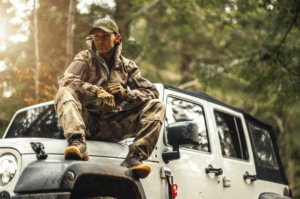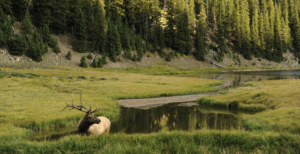

You’ll only feel revived by your days in the great outdoors if you come home disease-free. A lot of people don’t even think about how many illnesses they are exposed to every time that they load up the truck for a day of hunting. Many of these diseases initially show up in the part of your body that is most exposed: your skin. So in order to adventure with your skin scot-free, you’ll need more than a sturdy pair of boots and water-wicking base layers.
Be wary of the sun
If you think that the sun is just there to tell you when to pack up for the day, think again. Sun damage is not something to shrug off as a way to get a tan. It can be the catalyst for premature aging and even cancer. In order to protect your skin from the sun, buy a broad spectrum sunscreen with an spf of at least 30 and wear a hat. If being in the sun is a lifestyle for you, make sure to visit a dermatologist at least once a year in order to make sure that you are healthy.
There are some plants that you need to avoid
Hunters often use wild brush to camouflage themselves. Even hikers are likely to touch a few plants that they don’t know the names of. If you are in the outdoors a lot, there are some plants that you should be able to identify. Most people know about Poison Ivy and its itchy bumps. Poison Ivy has three pointed leaves that alternate up the stem. Worse than poison ivy is Poison Sumac, which can cause a week long rash and irritation. Poison Sumac is a shrub with compound leaves and clusters of grey-white berries. According to the U.S. Forest Service, Wild Hemlock is the most dangerous plant that you could come across. Direct contact with the plant’s sap can cause a rash and ingesting the leaves can be fatal. Poison Hemlock leaves are lacy and triangular, and its flowers come in small, white clusters.
Be careful around carcasses
If you don’t take the proper precautions when handling raw flesh in the field, you could contract any number of illnesses. Ehrlichiosis is a disease that comes from an infected tick, which hunters sometimes pick up from the animals that they handle without proper protection. This disease can show up after 3 weeks, and causes muscle pain, fever, cough and skin rashes. Brucellosis is a bacteria found in bison, elk, reindeer and caribou, and can infect hunters while they clean caracasses. This disease can cause muscle pain, fever, sweats and fatigue. Deer Parapoxvirus creates crusty lesions on the faces of deer and livestock. Humans can contract the virus while dressing carcasses. Symptoms include swollen lymph nodes and enlarged nodules. In order to avoid these illnesses, wear gloves, glasses and a long sleeved shirt while opening and dressing carcasses.
Make it easier to stay outside longer
Living an active, outdoor lifestyle is healthy for your brain and body, until you get sick. As long as you protect yourself, you will be able to stay outdoors all day, every day for a long time. So wear sunscreen, identify those poisonous plants and cover up when you handle raw flesh. Otherwise, you could find yourself stuck in bed.







